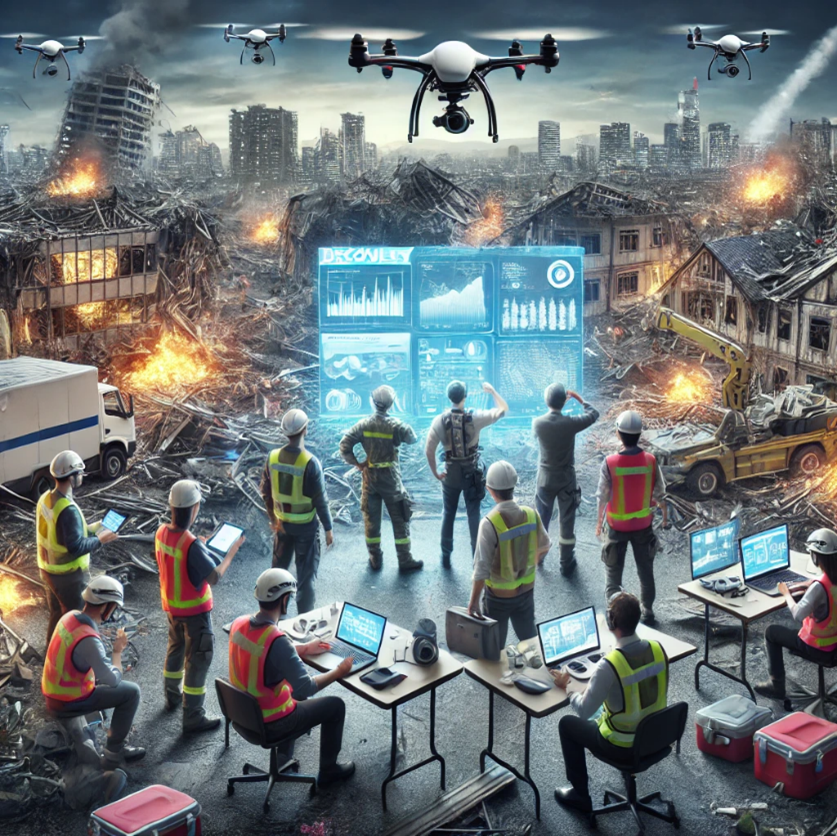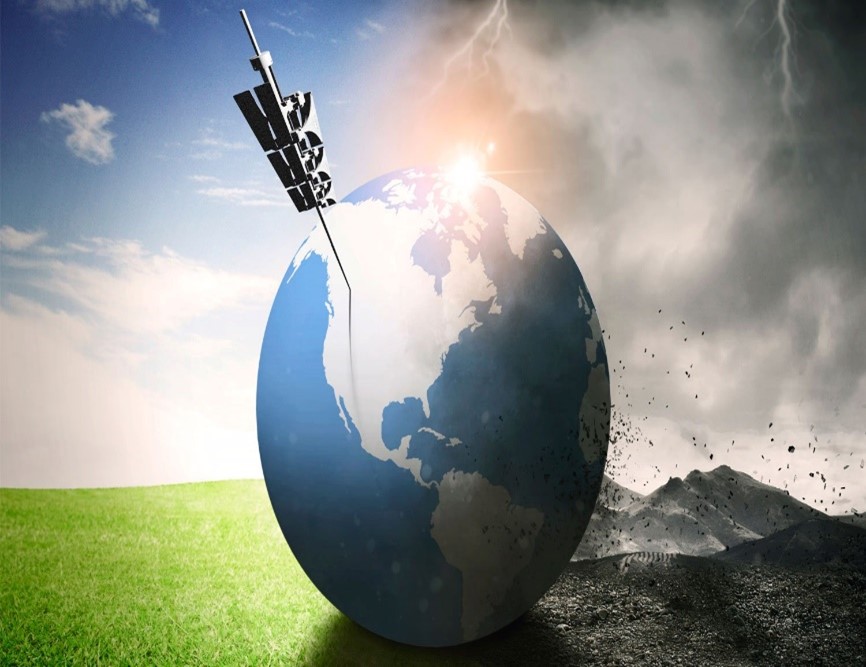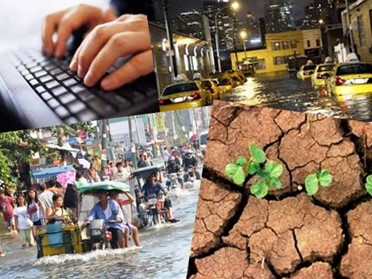What role can machine learning play in predicting and mitigating natural disasters?

What role can machine learning play in predicting and mitigating natural disasters?
by Maximilian 04:56pm Feb 03, 2025

Machine learning (ML) can play a pivotal role in predicting and mitigating natural disasters by analyzing vast amounts of data to identify patterns, forecast events, and optimize responses. Here’s how machine learning contributes to each stage of natural disaster management:
1. Predicting Natural Disasters
Machine learning can be used to analyze historical data, real-time environmental data, and complex simulations to predict natural disasters more accurately and in advance. Some key applications include:
Earthquakes: While predicting earthquakes remains challenging, ML can analyze seismic data to identify precursors and patterns that might indicate increased risk. For example, by analyzing the frequency and intensity of tremors or shifts in fault lines, machine learning models may help detect anomalies that precede earthquakes.
Flooding: Machine learning can improve flood forecasting by analyzing weather patterns, soil moisture levels, river flows, and terrain data. Models like deep learning can predict flood events by assessing the likelihood of rainfall accumulation, snowmelt, and soil saturation, helping authorities issue timely flood warnings.
Hurricanes and Cyclones: ML can improve the prediction of hurricanes by processing satellite imagery, sea surface temperature data, wind patterns, and historical hurricane paths. By analyzing this data, machine learning models can predict the development, strength, and trajectory of storms, offering longer lead times for evacuation and preparedness.
Wildfires: ML algorithms can analyze climate data, vegetation, and weather patterns to predict fire risk and monitor wildfires. Models can help predict where fires are likely to start and how fast they might spread, based on historical fire data, wind speed, and moisture content in vegetation.

2. Early Warning Systems
ML can enhance early warning systems by providing real-time alerts for communities in the path of a disaster, giving them more time to respond and evacuate. Key roles include:
Real-Time Data Processing: ML models can continuously monitor seismic sensors, weather stations, and satellite feeds to process incoming data in real-time. By quickly analyzing this data, machine learning can trigger warnings for events like tsunamis, tornadoes, and extreme weather events.
Multi-Source Data Fusion: Combining data from various sources (e.g., weather forecasts, sensor networks, social media posts, and satellite imagery) allows machine learning systems to generate comprehensive alerts that are more reliable and accurate.
3. Risk Assessment and Mapping
ML can help create more accurate and dynamic risk assessments for natural disasters, which are vital for preparedness and mitigation efforts:
Risk Mapping: Machine learning models can combine geographical, environmental, and socioeconomic data to create detailed risk maps for various natural disasters. For example, predicting which areas are most likely to experience flooding, wildfires, or landslides can help authorities better allocate resources and plan evacuations.
Vulnerability Assessment: ML can be used to assess the vulnerability of buildings, infrastructure, and populations to different types of natural disasters. By analyzing historical damage data, the age and condition of infrastructure, and demographic factors, ML can help determine which regions or structures need reinforcing or early evacuation.
4. Disaster Response Optimization
Machine learning can play a crucial role in disaster response efforts, improving coordination, resource allocation, and decision-making:
Resource Allocation: After a disaster, ML can help prioritize the deployment of resources like medical supplies, rescue teams, and equipment based on real-time data, such as the severity of damage, accessibility of affected areas, and population density. Optimizing resource allocation can significantly reduce response times and improve outcomes.
Search and Rescue Operations: ML can aid in search and rescue efforts by analyzing drone footage, satellite imagery, and data from other sensors to identify affected areas and missing persons. For example, computer vision techniques can help locate survivors in rubble or remote areas.
Logistical Planning: ML models can optimize supply chains for delivering food, water, medical supplies, and other necessities. By analyzing transportation routes, road conditions, and infrastructure damage, ML can help ensure that resources reach the most affected areas efficiently.

5. Post-Disaster Recovery and Damage Assessment
After a disaster occurs, machine learning can support damage assessment and recovery efforts:
Damage Estimation: ML models can analyze satellite imagery, drone photos, and on-the-ground reports to estimate the extent of the damage to infrastructure and the environment. This helps emergency teams understand the scope of the destruction and prioritize recovery efforts. Computer vision algorithms, for instance, can be trained to detect damaged buildings, roads, and other infrastructure from aerial images.
Long-Term Impact Analysis: ML can also assess the long-term environmental and social impacts of disasters, such as the recovery of ecosystems, the resettlement of displaced populations, and the restoration of public services. These analyses can guide long-term recovery strategies and inform policy.
6. Climate Change and Disaster Prevention
ML can help mitigate the effects of natural disasters by contributing to climate change models and sustainable practices:
Climate Modeling: Machine learning can analyze long-term climate data to identify trends and predict how changing weather patterns might increase the frequency or severity of certain types of natural disasters, such as hurricanes, wildfires, and droughts. These insights can help shape mitigation strategies.
Sustainable Urban Planning: By integrating ML into urban planning, cities can be designed to be more resilient to natural disasters. Machine learning can help predict the most vulnerable areas to flooding, earthquakes, or heatwaves, guiding the placement of infrastructure, buildings, and green spaces to minimize disaster risk.

7. Public Awareness and Education
ML-driven platforms can help in educating the public about natural disaster risks and response strategies:
Personalized Alerts: Machine learning models can send personalized alerts based on an individual's location, vulnerability, and the specific type of disaster predicted. This ensures that individuals receive relevant and timely information, improving preparedness.
Social Media Monitoring: ML can analyze social media platforms in real time to track conversations and detect early signs of disasters (e.g., unusual patterns of activity or reports of natural events). These systems can be integrated into early warning systems to provide immediate alerts.
Conclusion
Machine learning is a powerful tool for improving the prediction, prevention, and mitigation of natural disasters. By leveraging large datasets, real-time analytics, and advanced algorithms, ML can help reduce the impact of disasters, save lives, and optimize response efforts. As technology continues to evolve, the integration of AI and ML will likely play an even larger role in disaster management, enabling a more proactive and effective approach to handling natural disasters.






